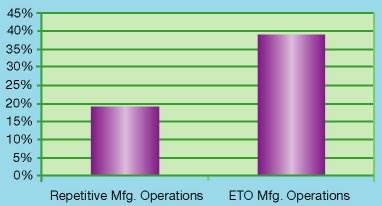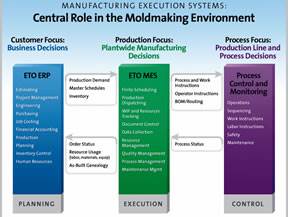Twelve Techniques for Managing Moldmaking Design Data Effectively
Mold manufacturers can address time, cost, quality and global communication challenges by using 3-D CAD software in combination with an integrated product data management system.
Efficient data management is becoming increasingly important for all successful product developers, and the need to manage design data in ways that save time, control costs and ensure quality has become especially critical for the moldmaking community.
The days when moldmakers had the luxury of taking their time to develop production molds are long gone. Mold development cycles that once spanned months have shrunk to weeks, and what used to take 20 weeks, customers now expect in four to six weeks time. Manufacturers not only demand faster turnaround, but due to the competitive environment surrounding the globalization of moldmaking operations, insist upon lower pricing as well. On top of time and cost pressures, moldmakers face the challenges related to dealing with customers located on another continent or the other side of the world.
With greater levels of geographically removed development, many moldmaking operations are 12 hours out of sync with their customers. Under this scenario, any form of traditional communication, whether by e-mail, fax or telephone, actually amounts to a 24-hour delay—extremely valuable time in today’s competitive moldmaking market.
Fortunately, moldmakers can address time, cost, quality and global communication challenges by using 3-D CAD software in combination with an integrated product data management (PDM) system. Because PDM capabilities vary, it’s important to implement a system that supports specific moldmaking development requirements. This article provides a dozen tips to help moldmakers learn how PDM can solve their data management challenges and understand which PDM system is best for them.
Twelve PDM System Uses
1. Manage 3-D data references between mold bases, parts and assemblies.
Even though 3-D CAD systems provide distinct advantages in the development of molds, they also generate greater volumes of complex data that create data management challenges. 3-D files contain references, associations and interrelationships that link them to other files—such as mold bases, plates, ejector pins, electrodes, CNC code, drawings, bills of materials (BOMs), multiple configurations and mold assemblies.
Attempting to manage these references with file renaming conventions or traditional file/folder management techniques is a losing proposition in the long term. In addition to increasing the potential for error through file overwriting, lost file associations and poor revision control, manual techniques take additional time and make it more difficult to reuse designs and leverage design data to support other business efficiencies.
2. Distinguish between standard and custom parts.
In the course of developing molds, moldmakers accumulate a range of standard parts, which they purchase from suppliers, and custom parts, which are unique and require additional work or fabrication. Moldmakers purchase standard parts, such as mold bases, at volume, which is more cost-effective than using customized parts, and moldmakers want to avoid using a custom part when a standard part will do the job.
By using a PDM system, moldmakers can use item numbers to distinguish between standard and custom parts, and use that information to maximize their use of more cost-effective, standardized parts.
3. Manage different types of mold design data.
Today’s mold designs contain more than simple CAD model or drawing data. Typically, mold development begins with the part or product to be molded, or a prototype mold, from which moldmakers develop production tooling. These designs can come in a variety of formats, ranging from 3-D CAD files to IGES, STEP and DXF/DWG files, or even actual paper drawings. Once development work starts, moldmakers generate additional types of data, including finite element analysis (FEA) results, moldflow analyses and rapid prototyping files. Additional documentation may take the form of Word, Excel and PDF files.
With a PDM system, moldmakers can manage any type of data associated with a particular project, whether the data is CAD-generated or not.
4. Facilitate design reuse, innovation and adaptation.
Reusing existing designs and adapting them for new applications is far preferable to starting every mold development project with a blank slate. A PDM system can help mold designers find existing mold designs that are similar to the project at hand, which they can then easily adapt for new jobs, saving time while accelerating estimating and quoting functions.
In addition to facilitating design reuse, a PDM system encourages innovation because it allows designers to explore what if scenarios, secure in the knowledge that they can easily roll back to previous versions if a particular idea does not pan out.
5. Manage, track, and accelerate the handling of ECOs and design modifications.
A mold development stage that carries potential for error is the iterative process surrounding design changes and the execution of engineering change orders (ECOs). Common scenarios include someone forgetting to make the change, misstating a modification or not completely understanding a change. A PDM system provides a complete project history and tracks all changes and ECOs. It can also make ECOs easier to implement by quickly locating all of the assemblies that rely on the part to be modified and what other pieces of data were automatically updated to reflect the change.
6. Control, manage and communicate mold design data with customers and suppliers.
Sharing and communicating mold design data with customers and suppliers in an efficient manner has become increasingly important because of the globalization of moldmaking operations. PDM systems can streamline this process by providing customers and suppliers with secure Web access to mold project data 24/7, eliminating geographic time delays and accelerating reviews and approvals.
7. Maintain data security.
Maintaining the security of mold design data is necessary for protecting intellectual property. With copied designs and knock-off products on the rise, a PDM system with secure log-ins and easy-to-administer user right controls is vital for protecting data within a company and with external suppliers, partners, contractors and clients. A PDM system also can support mirrored, off-site backup of the central data repository, protecting data in the event of a fire, natural disaster or other emergency.
8. Ensure accurate revision control.
The last thing a moldmaker wants is to find out that manufacturing is not working with the latest revision. Once metal is cut, unnecessary costs and time delays creep into the process that can lower profit margins and future competitiveness. By using a PDM system, moldmakers can tighten revision control, ensuring use of the most current revision and minimizing scrap and rework.
9. Improve data search capabilities by tracking mold design data by properties rather than file names.
Instead of trying to remember the file names associated with a particular job, moldmakers can use a PDM system to search for and locate data quickly and easily. Using a range of descriptive properties assigned to every file for every job, moldmakers can use a PDM system to have the data they need at their fingertips almost immediately.
Finding a three-plate mold that utilizes a stripper plate and a modified mold base using file names would be extremely onerous when compared to searching on any of those properties in a PDM system.
10. Manage BOMs and improve estimating/quoting functions.
Managing changes to BOMs as they affect estimating/quoting functions has vexed moldmakers for decades. With a PDM system, BOMs update automatically as revisions are made, and by providing purchasing, estimating and planning personnel with access to design data, moldmakers can streamline the process of soliciting new quotes and updating estimates to accommodate changes to BOMs.
11. Automate workflows and notifications.
By creating a foundation for more effective design data management, PDM systems can actually enable moldmakers to optimize their development processes through the use of automated workflows. Because PDM systems eliminate any questions or guesswork regarding the validity and currency of design data, moldmakers can create a workflow structure around the data and improve productivity.
A PDM system can drive every step in the process, from design reviews and customer approvals through validation and release to production. Some PDM systems even generate automatic e-mail notifications when specific personnel are required to take action, such as providing an approval.
12. Integrate mold design data with ERP/MRP systems.
Data management can even pay dividends beyond actual mold design through integration of PDM with Enterprise Resource Planning (ERP) or Manufacturing Resource Planning (MRP) systems. Some PDM systems can create a neutral file format, such as XML, which supports integration of mold data with ERP/MRP systems and can optimize additional back-office business functions.
Summary
No matter what type of molding a moldmaker does, data management has become a virtual necessity for competing successfully in a global market. With these tips, moldmakers cannot only understand how PDM can solve their data management challenges, but also determine which PDM system can help them manage mold design data most effectively.
Related Content
Think Safety: Eliminate Hazards Throughout the Shop
The tooling community is taking advantage of new products for safer mold shops and molding facilities.
Read MoreCertified Quality Management for Plastics Professionals – Materials to Tooling to Recycling
Why is certification of a shop’s quality management system to ISO 9001, AS9100, IATF 16949 or ISO 13485 so special? What does the certification signify? And what supports the paper behind the framed certificate?
Read MoreTreatment and Disposal of Used Metalworking Fluids
With greater emphasis on fluid longevity and fluid recycling, it is important to remember that water-based metalworking fluids are “consumable” and have a finite life.
Read MoreU.S. Economic Fundamentals Impacting Moldmaking
The economy continues to downshift, capping growth in moldmaking.
Read MoreRead Next
Can the Wrong ERP System Cost You Your Job?
More than one-third of all moldmaking manufacturers are custom shops, producing one-of-a-kind, unique products. Ironically, these special engineer-to-order manufacturers are the most vulnerable.
Read MoreManufacturing Execution Systems for Mold Manufacturers
A look at a system for mold manufacturers that can be used to measure and control critical production activities.
Read MoreReasons to Use Fiber Lasers for Mold Cleaning
Fiber lasers offer a simplicity, speed, control and portability, minimizing mold cleaning risks.
Read More

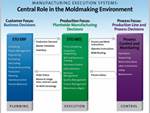


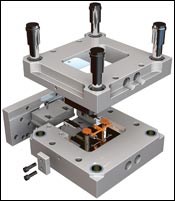
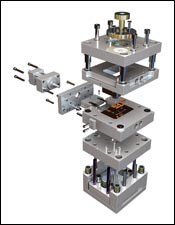
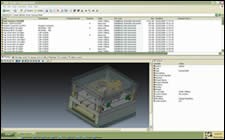
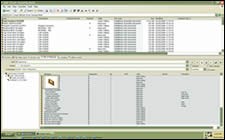







.jpg;maxWidth=300;quality=90)







